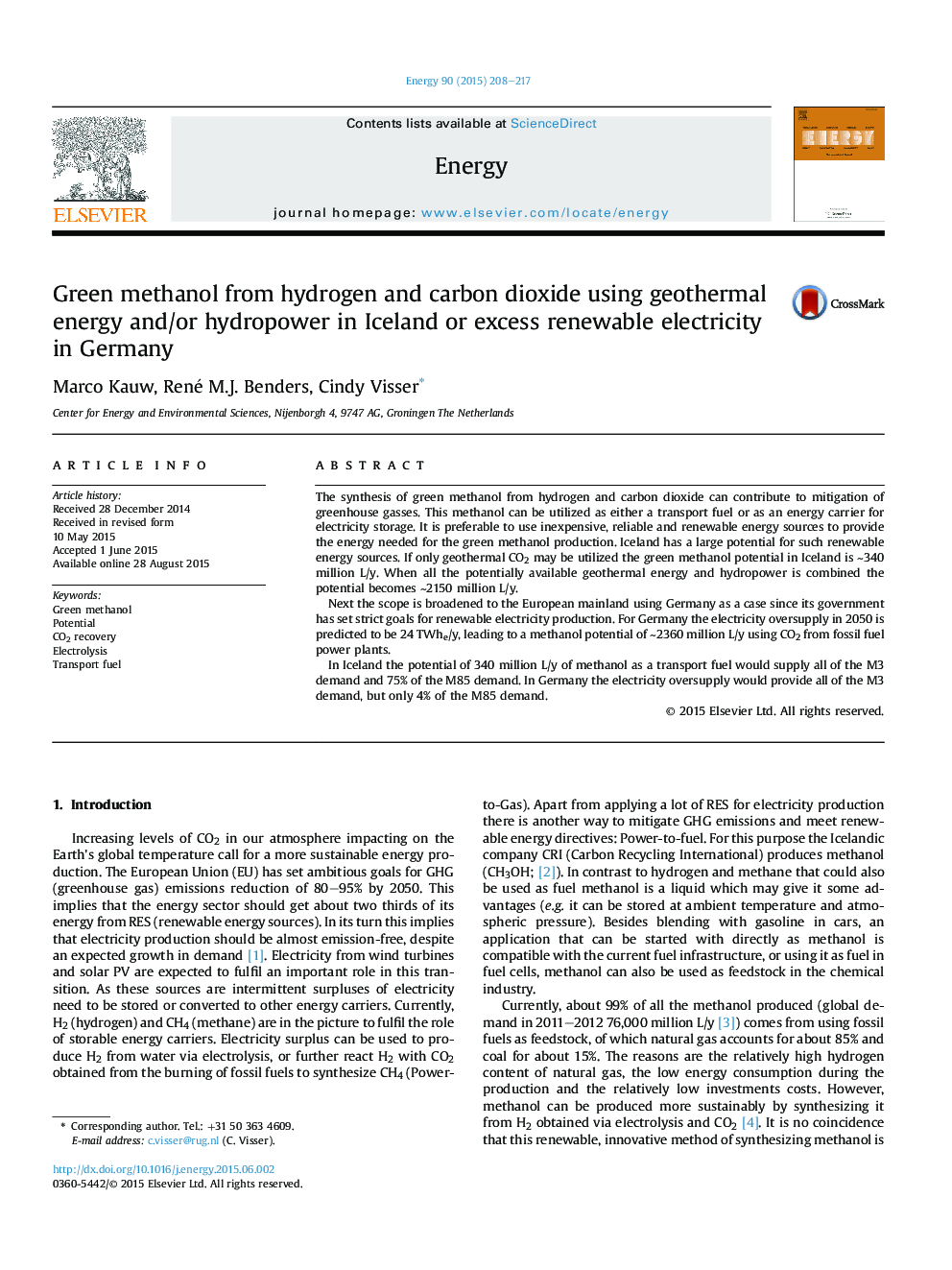| کد مقاله | کد نشریه | سال انتشار | مقاله انگلیسی | نسخه تمام متن |
|---|---|---|---|---|
| 1731727 | 1016097 | 2015 | 10 صفحه PDF | دانلود رایگان |
• In Iceland the overall potential for green methanol is ∼2150 million L/y.
• With geothermal CO2 as limiting factor the methanol potential is ∼340 million L/y.
• In Iceland methanol can fulfil 75% of the M85 demand with geothermal CO2.
• In Germany excess electricity can lead to a methanol potential of ∼2350 million L/y.
• In Germany methanol can fulfil all of the M3 demand and 4% of the M85 demand.
The synthesis of green methanol from hydrogen and carbon dioxide can contribute to mitigation of greenhouse gasses. This methanol can be utilized as either a transport fuel or as an energy carrier for electricity storage. It is preferable to use inexpensive, reliable and renewable energy sources to provide the energy needed for the green methanol production. Iceland has a large potential for such renewable energy sources. If only geothermal CO2 may be utilized the green methanol potential in Iceland is ∼340 million L/y. When all the potentially available geothermal energy and hydropower is combined the potential becomes ∼2150 million L/y.Next the scope is broadened to the European mainland using Germany as a case since its government has set strict goals for renewable electricity production. For Germany the electricity oversupply in 2050 is predicted to be 24 TWhe/y, leading to a methanol potential of ∼2360 million L/y using CO2 from fossil fuel power plants.In Iceland the potential of 340 million L/y of methanol as a transport fuel would supply all of the M3 demand and 75% of the M85 demand. In Germany the electricity oversupply would provide all of the M3 demand, but only 4% of the M85 demand.
Journal: Energy - Volume 90, Part 1, October 2015, Pages 208–217
